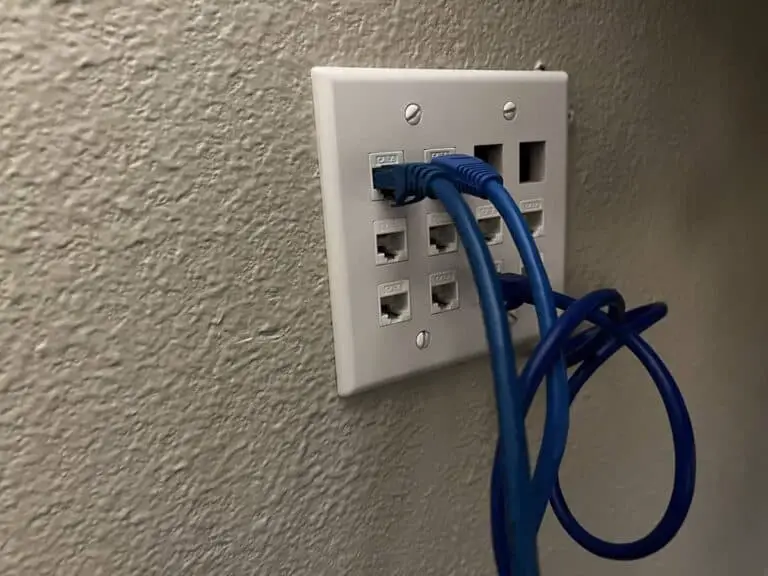Professor Won’t Respond to Emails? Here’s Why And What To Do
You have an important question for your professor, and you’ve already sent several emails but haven’t received a response. You need an answer soon, but unfortunately, many professors are not good at answering emails. So what do you do when a professor isn’t responding to emails?
If your professor is not responding to your emails, you can explore alternative methods of contacting them, such as calling or stopping by during office hours. While an unresponsive professor can be frustrating, you can also improve your chances of a response by properly crafting your emails.
In this article, I discuss the reasons why professors miss or ignore emails. I also provide some pointers on maximizing your chance of an email reply and alternate ways to get the information you need. And just to make sure you maximize your chances, I’ve even included a sample email to a professor to get you started!
If you want to improve your academic communication skills, read on to learn more!

Are Professors Allowed To Ignore Emails?
Technically, professors aren’t “allowed” to ignore emails. However, many routinely do despite school email response policies. The enormous volume of emails professors receive, and the workload expected of modern academics ensure that even diligent professors will sometimes miss important emails.
Most schools have policies encouraging or even requiring teachers to respond to student emails within a set time. In practice, these policies are not enforced.
Kerry Ann Rocquemore of the National Center for Faculty Development & Diversity notes that promotion and tenure committees do not evaluate candidates on their email response rates (source).
While this news may be frustrating for students, professors have many reasons for failing to respond. That urgent email you sent your prof landed in a box filled with messages demanding immediate attention.
Academic mailboxes contain innumerable advertisements for conferences, committee meetings, requests for papers, and newsletters from every branch of the administration. They also draw emails from friends, acquaintances, and annoyances your professor met at earlier symposia.
If your professor is working on a research project, they get bombarded with emails from partners and fellow scholars in the field. They receive many memes, political discussions, accidental “reply: all” messages, and other signal-drowning noise along with useful comments on their work.
If you are trying to get in touch with a TA, they are writing a thesis. This thesis takes up most of their waking hours that aren’t dedicated to teaching. It involves many emails back and forth for data, research papers, comments, editing suggestions, and clarification requests.
Amidst all this, your professor is dealing with emails from hundreds or thousands of students taking their different classes. It’s not hard to see how an individual email, or a series of emails, could get lost in the shuffle.
But don’t despair! While getting a professor to answer your emails can be frustrating, there are a few things you can do to increase your chances of getting a response.
How To Politely Ask Professor To Reply Email
When your professor turns a deaf inbox to your email queries, you may feel like you have hit a stone wall. But don’t give up hope just yet! Here are some ways to bring your email to the front of the queue in the nicest possible way.
Include Your Name and Class in Your Email
It can be difficult to remember everybody’s name when you’re teaching multiple classes filled with hundreds of students. Opening your message with your name, class, and section saves your professor a lot of time and potential confusion and lets them focus immediately on your specific problem.
Remember that your professor has an inbox full of messages clamoring for attention. An email that includes your name and class assignment in the first line takes less time to answer than an email requiring your prof to search through class lists.
The more quickly your professor can respond, the more likely they are to answer your email.
Additionally, it’s best to communicate with your professors and university officials through your school email account. That account is less likely to trip spam blockers than communications from outside email providers. And a message from “BigChungus420” is more likely to get filtered or deleted than an email from your school address.
While we are on the subject of names, make sure you spell your professor’s name correctly. If necessary, cut and paste from your school’s website. Unless you regularly address your instructor by their first name, you should use their last name and title. “Professor” or “Prof.” is always appropriate, even for instructors without PhDs.
Be Brief, But Not Too Brief
“Why did you give me a failing grade on this essay?” may seem like a reasonable question. But if you send a one-line email consisting of nothing but that question, your professor may not bother typing back “Read my comments again.”
On the other hand, a 2000-word email that discusses your traumatic experience with a 5th grade English teacher, complains about the essay instructions, and argues that cut-and-pasted paragraphs from Wikipedia aren’t plagiarism is equally unlikely to get a response.
Your professor may need to know you were ill and have a doctor’s note. They don’t need to know your symptoms in painful detail. Oversharing will not make your professor more sympathetic.
If your message requires more than a few sentences, be sure to break your thoughts up into paragraphs. Nobody likes reading walls of text. Also, make sure that you let your professor know what you need from them in your first paragraph.
A short, precise message saves everybody time and improves your odds of getting a fast and accurate response. You need to explain clearly and politely who you are, why you are contacting your professor, and what you want them to do on your behalf.
Read the Syllabus, Read Your Notes
You probably skimmed through the syllabus on your first day of class. But did you read it carefully and note all due dates and requirements? Did you note class policies on attendance or any other contact emails listed in the syllabus?
Around the turn of the 21st century, an average syllabus was a page or two long. Today a syllabus can run 20+ pages and resemble software licenses. After a 2013 lawsuit against Lehigh University over a C+ grade, many syllabi today include lavishly detailed descriptions of every class requirement (source).
Many students note assignment due dates and required reading, then scroll to the end and click the button. But as with software licenses, sometimes you need to read the fine print. Just as you are expected to know when assignments are due, you are expected to know and adhere to everything you agreed to when you clicked.
Your class syllabus may also include information on what to do and whom to contact if problems arise. For example, many colleges handle class communications through Learning Management Systems (LMS) forums. Your syllabus should also provide a forum link, and that forum may have a section or subforum that can answer your question.
When you are done studying your syllabus, check your class notes. Did your professor change the requirements or provide new information at any point? Also, check your mailbox for emails you might have missed, making sure to check junk mail and trash.
Professors are less likely to respond to questions they have already answered. Doing your research beforehand can solve your issue and save time for both you and your instructor. You can also check in with your fellow students to see if they have an answer to your question about an upcoming test or assignment.
Let the Professor Know What You Have Done To Fix the Problem
Your professor will feel more inclined to help if you show concrete steps you took toward resolving the issue.
If you send an email as soon as you know there will be a deadline issue, you will generally get a much better result than if you respond three days after the due date. (And if you don’t get a response, you have created a data trail that shows your initiative).
Every professor was once a struggling student. Many still are struggling students. They understand that sometimes unforeseen calamities happen. But they also know all the excuses students make when they forget an assignment.
Being honest is more likely to get you a sympathetic response than any carefully crafted excuse.
Make Sure Your Professor Can Fix Your Problem
Suppose you dropped a class before the semester started but are still getting billed for those credits. The instructor teaching that class can do very little to help you. You will need to focus your email efforts on the billing and financial aid departments.
If you sent a note to your professor inviting them to support your good cause, don’t take their non-response personally. Academics rarely have a great deal of spare time or money. And if your issue involves a school policy rather than a class policy, they may have little or no say in administrative decisions.
Some people use a shotgun approach when dealing with an email issue and cc: everyone who might be remotely involved. This approach can wind up tripping filters (huge cc: lists are a leading spam indicator) and generally moves your email down on the priority queue. This method of getting attention more often leaves your message ignored by everybody.
Try an Office Visit, Phone Call, or Virtual Meeting
Email lends itself best to brief and easily answered questions. If your problem cannot be summed up in a paragraph or two, you will probably do better in a meeting with your professor.
Some professors hate phone meetings, while others regularly give out their phone numbers and encourage students to call with any concerns. If your professor prefers phone communications, you may find a brief chat works better than multiple emails.
Professors have traditionally had office hours where students could sign up for a meeting. After COVID-19, virtual meetings on platforms like Zoom have become standard.
Whether your professor takes appointments face-to-face or virtually, there should be some way you can arrange a get-together with your professor to discuss your problem.
Don’t Lose Your Temper
If you are reading your syllabus for the first time or failed to get notes for missed classes, the responsibility rests on your shoulders. You may be able to work something out with your professor, but they are under no obligation to make accommodations for your oversight.
Even if your professor is unresponsive or refuses “unfairly” to acknowledge your problem, a heated email reply won’t solve anything and will only weaken any chance you have to appeal your case to the administration.
Document all efforts you make to contact your professor and any responses from them. Study all requirements in the syllabus and the student handbook. If your professor’s behavior violates those documents, provide citations to that effect.
If you failed to meet these requirements, you could offer an honest account of your issues and any mitigating circumstances. Most professors and college administrators are reasonable people and willing to work with students dealing with a crisis.
Sample Follow-Up Email to Professor Who Hasn’t Replied
Dear Professor Rowland:
My name is Jane Knox, and I’m a student in your 11:30 am M-W Chemistry 201 class. I am also on the field hockey team, and my 5:30-7:30 Wednesday chemistry lab conflicts with practice.
Charles Li, our Wednesday lab assistant, suggested I transfer to the 1:30-3:30 Friday slot. According to departmental regulations and the University Student Handbook, that transfer requires your signed approval.
I sent an earlier message but have not yet heard back from you. Attached, please find a copy of the transfer form with all my information filled out.
If you could sign and send it back, I can forward this transfer to the department. Thank you very much for your time.
Jane Knox
Conclusion
If your professor is not responding to your emails, the cause is more likely oversight and overwork than malice on their part. Presenting your case politely and concisely increases the chance your professor will reply.
The best way to avoid a non-response to emergency emails is to avoid the emergency altogether. Reading through your syllabi can not only help you keep up with class requirements. It can also tell you who to contact should an issue arise.
Recommended Reading:







